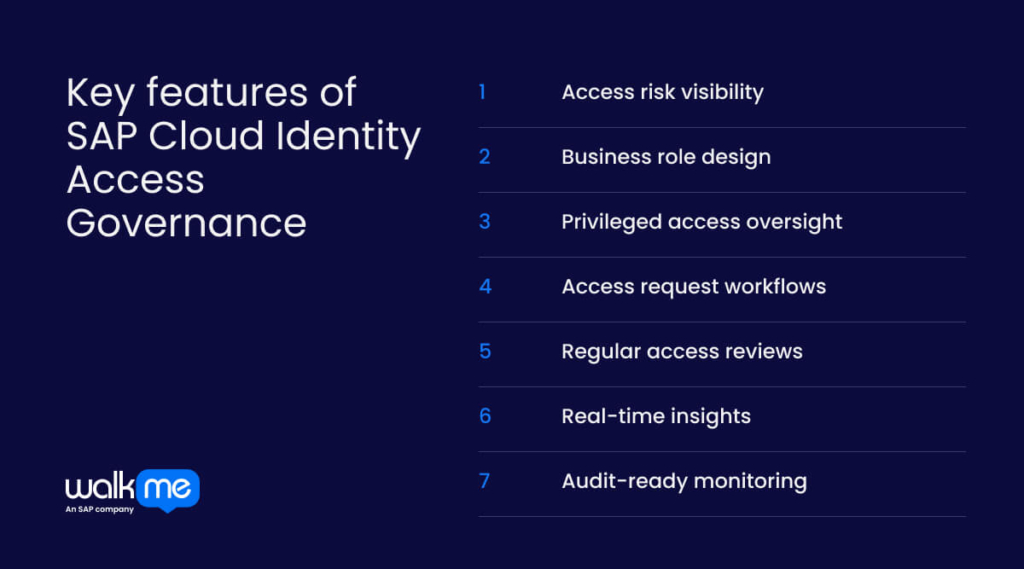Most businesses rely on cloud services to work faster and maintain adaptability. Cloud-native platforms, such as SAP, provide tools to manage daily operations, but they also create new security risks.
Hackers target cloud systems because they hold sensitive data and often use third-party components with hidden flaws. Without strong protection, companies may suffer data loss, system outages, or financial fraud. To mitigate these risks, businesses should utilize the appropriate SAP security tools.
In this article, we will explain the top seven tools that help protect SAP environments. It also provides practical tips to help you select the most suitable security solution based on your company’s setup and long-term objectives.

1. SAP Data Custodian
Best For: Businesses using SAP applications and public cloud services to protect data, manage where it’s stored, and control their encryption keys.
SAP Data Custodian is a cloud-based tool that helps companies protect data, manage IT governance, and meet compliance rules in public cloud environments. It gives you complete control over how you store and access data.
Key features:
- Data activity monitoring: This tool enables you to track where you move, access and store data.
- Policy enforcement: Organizations can define and implement rules for data access, transfer, and storage.
- Data location control: Your business can choose where to store and process data to meet local laws.
- Encryption management: You can benefit from encryption keys to secure data in a trusted environment.
- Alert monitoring: Companies can receive warnings about potential security or policy issues.
- Compliance adherence: SAP Data Custodian can also help maintain alignment with data protection laws and internal business regulations.
2. SAP Enterprise Threat Detection (ETD)
Best For: Security and IT teams who want real-time tools to detect, investigate, and respond to enterprise threats.
SAP Enterprise Threat Detection (SAP ETD) helps businesses protect their SAP systems from cyberattacks by monitoring activity, identifying unusual behavior and taking action to prevent issues from causing harm. Built on SAP HANA, it delivers fast, real-time analysis to support strong system protection and regulatory compliance.
Key features:
- Real-time threat monitoring: Continuous tracking of SAP systems using rules and machine learning to catch threats as they happen.
- Security log analysis: Collection and review of logs from SAP and non-SAP systems to detect patterns and risks.
- Instant alerting: Immediate notifications to teams when suspicious activity occurs.
- Incident response support: Tools and workflows to investigate issues and reduce potential damage.
- Custom alert creation: Flexible rules to detect specific risks based on business needs.
- Compliance reporting: Detailed audit trails and reports to meet regulatory requirements.
- Tool integration: Seamless connection with other SAP and non-SAP security systems for stronger protection.
3. SAP Governance, Risk, and Compliance (GRC)
Best For: Large enterprises and companies within regulated industries that want to ensure governance and compliance within their daily operations.
SAP Governance, Risk, and Compliance (SAP GRC) empowers businesses to manage risk, enhance security, and meet compliance requirements through a unified platform. By utilizing SAP GRC, organizations can streamline audits, reduce frau,d and maintain secure and compliant systems.
Key features:
- Integrated SAP support: Smooth connection with other SAP tools and core business systems.
- Centralized compliance data repository: A single, trusted view of compliance and risk-related information.
- User access control: Tools for setting permissions, approving access, and checking for access risks.
- Ongoing risk monitoring: Real-time tracking and forecasting of potential business threats.
- Stronger process oversight: Automated checks and monitoring of digital workflows for compliance.
- Proactive fraud detection: Fast spotting of errors and fraud through real-time data analysis.
- Simplified audit management: Organized audit records and clear audit workflows.
- Precise regulatory alignment: Built-in support to meet legal and industry standards.
- Powerful security tools: Solutions for managing threats and reducing security risks.
4. SAP Cloud Identity Access Governance

Best For: Security teams who want to manage roles, monitor sensitive access, and spot risks in real time.
SAP Cloud Identity Access Governance (IAG) allows businesses to control user access and meet compliance requirements in both cloud and hybrid SAP environments. Through adopting IAG, companies can reduce the chances of security breaches and ensure users have only the access they need.
Key features:
- Access risk visibility: IAG highlights risky permissions and helps teams resolve issues before they escalate into threats.
- Business role design: Companies can establish clear role structures to prevent users from having excessive access.
- Privileged access oversight: Security teams can track and manage high-risk user access to sensitive systems.
- Access request workflows: Users can request access through built-in approval steps for better control.
- Regular access reviews: Managers can review and confirm user permissions at scheduled times.
- Real-time insights: Dashboards provide up-to-date information on access risks.
- Audit-ready monitoring: IAG continuously checks the user journey to support compliance and audits.
5. SAP Information Lifecycle Management
Best For: Organizations of all sizes who want to manage data volumes, reduce storage costs, and protect sensitive information.
SAP Information Lifecycle Management (ILM) enables businesses to manage their SAP data from creation to deletion. This practice ensures compliance with both legal and business requirements.
ILM also supports data privacy laws, such as GDPR, and enables companies to manage their data ecosystem.
Key features:
- Centralized data control: Employees manage data across multiple SAP systems from one place.
- Efficient data archiving: ILM moves old or unused data to lower-cost storage, improving system performance.
- Clear retention policies: Organizations define how long to keep data based on business or legal rules.
- Secure data deletion: Teams can permanently delete data when it’s no longer needed or allowed.
- Support for system retirement: Businesses can shut down old systems while keeping required data safe and compliant.
- Privacy protection tools: ILM helps block or delete personal data to meet privacy laws.
- Built-in audit tracking: Reports and logs show how data is handled to support audits and compliance.
- Other SAP integrations: ILM integrates seamlessly with other SAP tools and modules, eliminating the need for additional setup.
6. SAP EarlyWatch
Best For: IT administrators and solution managers who want to monitor system health, spot issues early, and manage performance.
SAP EarlyWatch helps businesses maintain healthy, secure, and high-performing SAP systems. It identifies problems early and provides clear steps to resolve them. With helpful reports and intelligent alerts, SAP EarlyWatch provides teams with the tools they need to stay ahead of system issues.
Key features:
- System Analysis: The service performs a comprehensive analysis of performance, configuration, and security on a weekly basis.
- Priority issue alerts: It highlights the most urgent problems so teams can take action quickly.
- Helpful recommendations: The platform provides clear solutions to resolve issues and enhance performance.
- Detailed reports: Teams gain access to reports that provide performance data and system settings.
- Predictive insights: Machine learning flags risks before they cause problems.
- Security checks: The tool reviews user experience and system vulnerabilities to ensure optimal security.
- Central access via SAP for Me: Teams manage alerts and reports in one platform.
How to choose the right SAP security tool for your enterprise
Opting for the right SAP security tools is crucial because they help protect sensitive data and comply with legal requirements
The right tech stack also enables businesses to mitigate risks early, while maintaining the security of their SAP systems.
Here’s what SAP security tool you should go for, depending on your business needs:
| Type of security consideration | Recommended tools |
| Protect user roles, authorizations, logs, and sensitive system data | SAP GRC, SAP IAG, SAP Data Custodian |
| Meet GDPR, HIPAA, and other legal or industry requirements | SAP GRC, SAP ILM, SAP Data Custodian |
| Identify weaknesses, misconfigurations, and potential threats | SAP Enterprise Threat Detection (ETD), SAP EarlyWatch |
| Get alerts for unusual activity or signs of attack | SAP ETD, SAP EarlyWatch |
| Manage storage, archiving, and secure deletion of old data | SAP ILM |
| Secure data in public cloud environments and control data location | SAP Data Custodian |
Build a secure SAP environment with the right SAP security tools
Managing security across multiple SAP systems requires time, focus, and a clear strategy. Each SAP system, whether in the cloud, on-premise, or a hybrid setup, comes with unique security challenges. As businesses expand, their SAP environments grow more complex, increasing the chance of gaps or weak points.
To stay ahead, companies should use SAP security tools that automate key security tasks. These types of tools can help manage user access, detect suspicious activity, track compliance, and enforce security rules. With automation, teams save time, reduce mistakes, and respond faster to threats.
A strong SAP security strategy includes multiple layers of defense. Teams can combine access controls, threat detection, data protection, and audit tools to build a comprehensive security solution. This layered approach strengthens the entire SAP landscape, supports business continuity plans, and protects the company’s most valuable systems and data.
FAQs
SAP security tools are software solutions designed to protect SAP systems from threats and vulnerabilities. They manage who can access the system, protect data, and secure applications. These tools work together to keep SAP systems private, accurate, and available when needed.
SAP security tools are essential for protecting business data and ensuring that key processes work well. They help prevent data leaks, block unwanted access, and avoid system problems. This protects the company’s reputation and helps maintain its financial stability.
Small businesses can utilize SAP security tools to protect their data and comply with regulations. SAP provides tools like access controls, login checks, and network settings to protect business information. By utilizing these tools, small businesses can mitigate the risk of cyberattacks and maintain the security of their systems.

